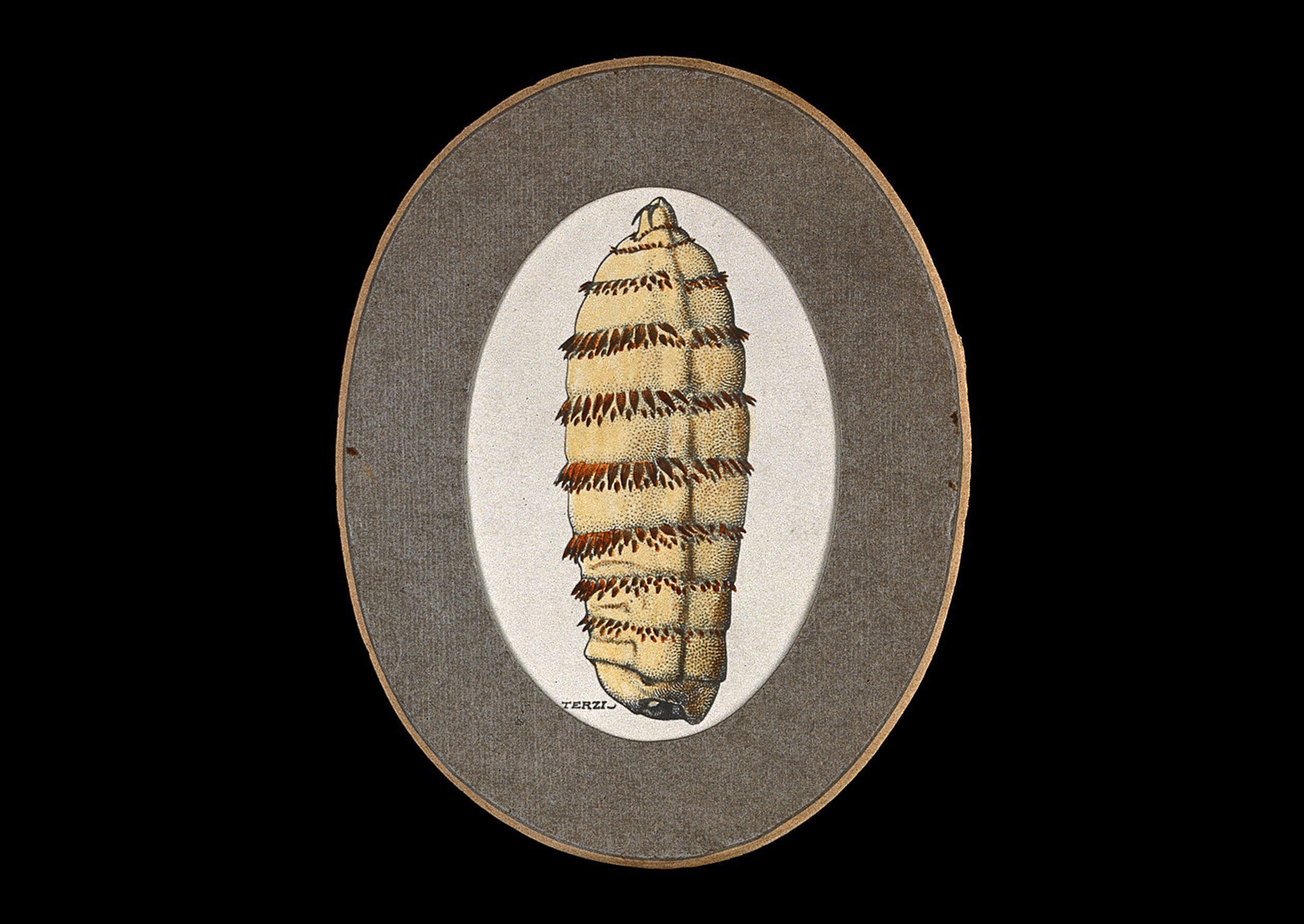Cutting the Bean
A new series on fact-checking minor morsels of intellectual history
Cabinet

The world turns into an inexhaustible book.
—Marina Warner[1]
26 December 1934. André Breton, Jacques Lacan, and Roger Caillois are staring down a hill of jumping beans.
Moments earlier, they were enjoying each other’s company at the Bretons’ apartment on rue Fontaine.[2] This quickly changed with the entrance of an unnamed woman, a kind of “person on business from Porlock” (or rather, Pigalle), come to accidentally puncture the pleasure dome of Surrealism. She places her fist down on the table. The men lean in. Her hand unclenches to reveal a pile of white beans. At first, nothing extraordinary. Then the beans begin to twitch. They wiggle and spin and dance across the tabletop. A few somersault onto the carpet at their feet.
“I think I can safely say that the three impartial observers gathered there, to whom nothing like it had ever been described, shared the same amazement at first”, recounts Breton.[3] Collective awe quickly decayed into discrete approaches to curiosity. Accounts diverge, but Caillois suggested cutting open a bean to reveal the mechanism of its motion—worm? motor? Maxwell’s demon incarnate? Lacan, says Breton, wanted to preserve “the irrationality” and leave the beans uncut. Breton, in a most generous recollection (his own), asked Caillois to delay the scalpel until they had “exhausted the discussion on the probable cause of the movements.”[4] What happened next is fuzzy, but Caillois left the apartment agitated and jumpy, having finally outgrown Surrealism’s cocoon. The larvae inside the beans lived to see another day. The friendship between Caillois and Breton did not.
In a lettre de rupture to Breton written the next day, Caillois resigned heatedly from the Surrealist cause. “You are definitely [solely] on the side of intuition, poetry, and art”, he tells his mentor.[5] Caillois, on the other hand, seeks “to strike an equal balance between the satisfactions offered by the first [research] and the jouissances offered by the second [poetry].” He elusively describes “children raised in boxes, who are amazed to discover ferns,” and recounts how, in his own youth, “I could never really have fun with toys; I was constantly ripping them open or dismantling them to find out ‘what they were like inside, how they worked.’”[6] Whereas Breton supposedly resisted cutting the bean because “that would have destroyed the mystery,” Caillois champions “a form of the Marvellous that does not fear knowledge but, on the contrary, thrives on it.”[7]
In our new series on fact-checking for Kiosk, “Cutting the Bean,” we feature short articles that showcase knowledge as a path toward marvel, that mount what Marina Warner describes as “a rescue operation of magic from the realm of irrationality,” and that celebrate Caillois’s “debacle of the evident.” We are all raised in boxes of a kind, and ferns lie waiting in the footnotes.
Articles published so far:
Hunter Dukes, “Kojève & Cigarettes: Fact-checking American Geist” (29 August 2024)
PS: Remarkably, as the first article in this series was being prepared for publication, we noticed that the original copy of Callois’s letter to Breton was for sale through a dealer in Lyon. The letter is now in possession of Cabinet’s editors. There was no question as to whether or not we would cut open the envelope.
- Marina Warner, “The Writing of Stones: Roger Caillois’s Imaginary Logic,” Cabinet (Spring 2008). Available at cabinetmagazine.org/issues/29/warner.php.
- The location comes from Breton’s recollections. His biographer Mark Polizzotti puts the trio at a café. André Breton, Free Rein (La Clé des champs), trans. Michel Parmentier and Jacqueline d’Amboise (Lincoln: University of Nebraska Press, 1995), p. 179. Mark Polizzotti, Revolutions of the Mind: The Life of André Breton (Boston: Black Widow Press, 2009), p. 368.
- André Breton, Free Rein, p. 179.
- Ibid.
- Roger Caillois, “Letter to André Breton,” in The Edge of Surrealism: A Roger Caillois Reader, ed. Claudine Frank, trans. Claudine Frank and Camille Naish (Durham, NC: Duke University Press, 2003), p. 84.
- Ibid., p. 85.
- Ibid.
Spotted an error? Email us at corrections at cabinetmagazine dot org.
If you’ve enjoyed the free articles that we offer on our site, please consider subscribing to our nonprofit magazine. You get twelve online issues and unlimited access to all our archives.